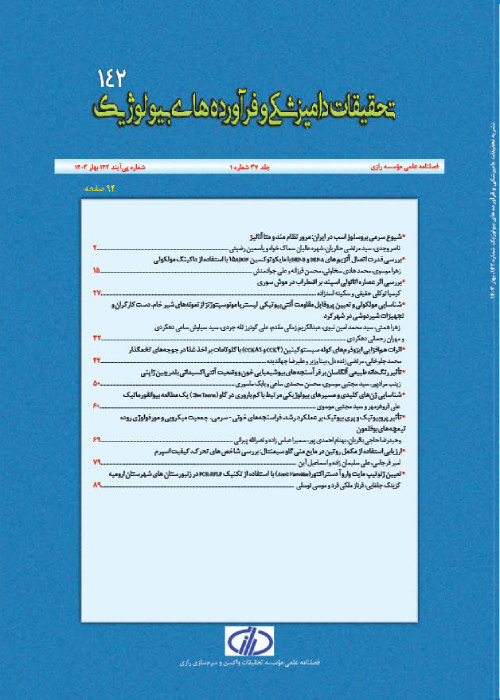Fungal contamination in handmade and factory-made feed of rainbow trout (Oncorhincus mykiss)
In the present study, fungal contaminations of trout feed were examined with special attention of potentially mycotoxigenic fungi. The feed samples were obtained from a factory and 6 farms. Sampling was done on final pellets and their ingredients including wheat, wheat flour, soya, fish powder, gluten and starch in the factory and in the farm according to the instruction of Institute of Standard and Industrial Research of Iran (No: 7570). Samples were transferred to the laboratory in nylon bags and cultured for fungal isolation on specific media i.e. Aspergillus flavus and parasiticus agar (AFPA) and Dichloran rosebengal chloramphenicol agar (DRCA). Fungal colonies were purified from primary cultures by sub-culturing on Sabouraud dextrose agar plates and identified at the genus or species level by a combination of macro- and microscopic morphological criteria. Based on the results obtained, a total of 133 fungal isolates belonging to 11 different genera were isolated. The most contamination occurred on the factory’s final production stage, followed by the wheat flour (17.29%) and gluten (15.78%). Aspergillus species were isolated from all the samples except one. The genus aspergillus was the most prominent fungus isolated (54.88%) followed by the genera penicillium (10.52%) and Absidia (9.77%). Aspergillus flavus was most frequently isolated fungus (36.84%). A total number of 109 fungal species from 11 genera were isolated from the pellets and feed ingredients in the factory. The most contamination was in the pellet (22.01%), followed by wheat flour (21.1%) and gluten (19.26%). Aspergillus species were present in all the samples, while pseudallscheria and ulocladium were isolated only from the pellets. Aspergillus was the most prominent genus (55.99%), followed by the genera penicillium (12.84%), absidia (11.01%) and pseudallscheria (10.1%). From the farm samples, a total of 24 fungal species were isolated, of which 50% were belonging to the genus aspergillus from the species, Aspergillus flavus. Three of the farms used handmade feed while the other three farms consisted of factory made feed. The feeds that were handmade were more contaminated than that of the factory made feed.
- حق عضویت دریافتی صرف حمایت از نشریات عضو و نگهداری، تکمیل و توسعه مگیران میشود.
- پرداخت حق اشتراک و دانلود مقالات اجازه بازنشر آن در سایر رسانههای چاپی و دیجیتال را به کاربر نمیدهد.



